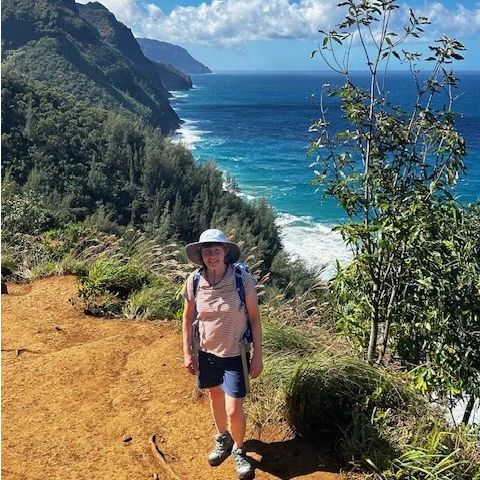AARP Hearing Center


In all my years of sporty pursuits, I had never had knee issues. Ankle sprains, many. Muscle strains, yep. But my knees were always reliable, until I reached my later 50s, and one summer morning, I felt a twinge during an easy jog with a friend.
Out of caution, I swore off running for two weeks but dove into painting my son’s bedroom instead. Within a day, my right knee had ballooned with fluid.
“Bursitis,” my doctor diagnosed. He put me in a knee brace for 10 days. My inner 30-year-old was appalled.
Once the brace was off, I fell into a disjointed pattern of walking, hiking, jogging and inactivity, guided by my knee’s response. The lack of predictability put me off-kilter. I biked — haphazardly — but it’s not the same as running. Swimming isn’t my thing, either. I adore hiking the mountains near my home, but I wanted to go faster.
When I finally visited a sports medicine clinic, the specialist ruled out bursitis, diagnosing osteoarthritis. “If you ever had bursitis, you don’t anymore,” he told me. He prescribed physical therapy and a nonsteroidal anti-inflammatory gel.


Exercises that help the pain
The physical therapist assigned hip and knee exercises. Three to four times a week, I cycle through stair “step-downs,” standing clamshells with an exercise band, leg squats and lunges, heel raises, side planks with one leg raised, and forward “T” one-legged balancing.
And the exercises have helped some: I can usually hike when I want to now. My knee still has off days, though. In fact, it never feels totally normal. Still, regular PT has big perks. My ankles are stronger, my core strength has increased, and my lower back feels the best it has in years. These are exercises I’ll be doing for life.
The jury’s still out on how much I’ll be running in the future, but meanwhile my balance is bombproof. It isn’t what I wanted, but it’s not nothing. I can hear my inner 80-year-old cheering me on.































.jpg?crop=true&anchor=13,195&q=80&color=ffffffff&u=lywnjt&w=2008&h=1154)





























You Might Also Like
How to Manage Chronic Pain
New treatments, including nondrug and nonsurgical options, may help you live more comfortably
How Can I Get Relief From Back Pain?
A doctor’s advice on easing pain without relying on meds
6 Moves to Keep You Fit This Winter
Try these to stay strong and healthy in the colder months